Have you ever wondered why there aren’t more female minifigures represented in the LEGO Collectible minifigures line? Series after series we mention in our reviews the absence of female minifigures. It seems there is an explanation for this disparity: Boys complain when they open up a blind bag and see a female character.
Really? The reason why there are so many male figures is that girls are happy with any mini figure that looks good and boys complain when it isn’t a boy?
At least this is the reason related to me by my friend Alice Finch who attended a work shop at the Skærbæk Fan Weekend given by Austin William Carlson, a minifigures designer for The LEGO Group. I know that this is very second hand information, but I heard this same quote from two different people who attended the talk: the boys complain and the girls don’t.
As we all know, The LEGO Group is finely attended to their customers and they take customer feedback very seriously. They want to accommodate their customers and give them what they want – even if it’s historically inaccurate.
The Ten LEGO Characteristics
In 1963 Godtfred Kirk Christiansen, son of LEGO founder Ole Kirk Kristiansen, developed a set of guidelines – a LEGO constitution so to speak – to guide both the consumers and the customers of LEGO. His 10 basic characteristics become the core of LEGO development and guided the company.
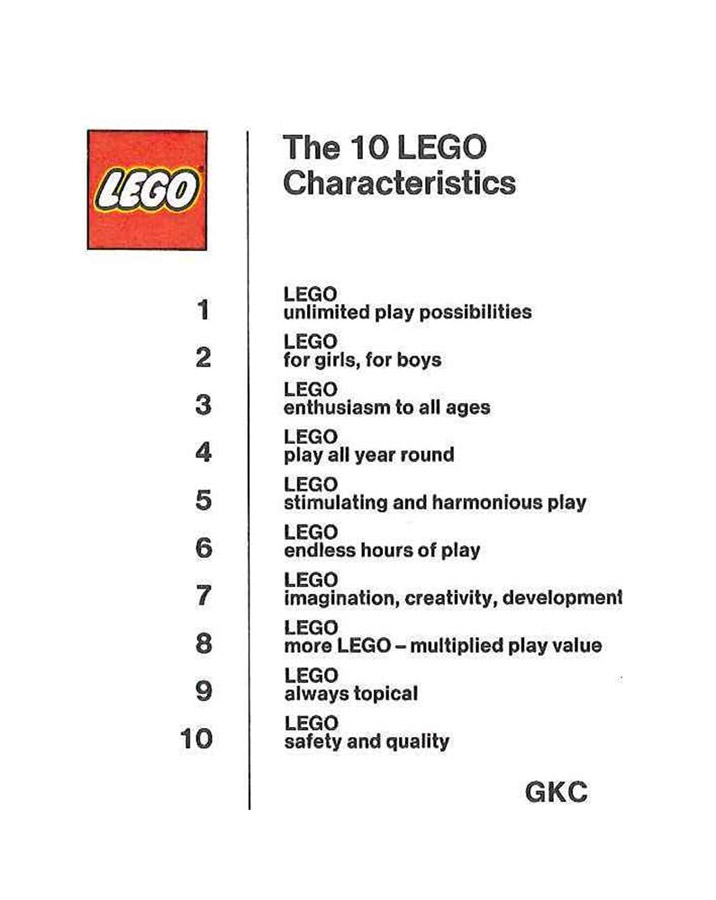
Notice number two? LEGO is for girls, for boys. LEGO is designed for all children, with girls even coming before boys. Back in 1963 LEGO was designed for all children, not just the ones who complained the most. It seems in the intervening years The LEGO Group has put company profits ahead of the ideals the company was founded on. I might be able to understand this line of thinking of there are shareholders to be accountable to; but The LEGO Group is a privately held company. They are accountable to no one but themselves and their own ideals.
Who is complaining?
So who is doing all this complaining? Certainly in the talk given at Skærbæk there were no details given about how these complaints were received. Were they generated by focus groups or were they generated through customer service calls? I can imagine that LEGO’s response will be different depending on how these complaints are generated.
When boys complain, who is really doing the complaining? Do these young boys, who are so disappointed by receiving a female collectible mini figure, ask for LEGO’s customer service number so they can call and complain? Or is mom or dad complaining on behalf of the ‘disappointed’ child? If mom or dad is actually making the phone call – who is the one disappointed? Why doesn’t the parent use these moments of perceived disappointment as a chance to explain that all figures are equal and that they can have as much fun with a female minifigure as with a male minifigure?
When we show our children that boy mini figures are more valuable than female minifigures it doesn’t take a big leap to see how this plays out years later in today’s newspaper headlines.
Collectible MiniFigures
Have you ever sat down and looked at how many female collectible minifigures are in each series? In series 1-4 there are only three characters that are recognizable as female. In Series 4 and 5 there were four female characters. Ever since series seven their have been five of sixteen characters that can be identified as female. The exceptions to this is the Lego Movie, the second series of The Simpsons and the Disney series, each has six female characters.
Maybe the LEGO minifigure designers are having a hard time thinking up ideas for collectible minifigure characters. I know that I would have a difficult time creating 48 distinct characters every year. So to help The LEGO Group out I asked my fellow Toy Photography moderators to come up with ideas for new female minifigures. Here is our list:
- Artemis
- Persephone
- Sculptor
- President
- Mulan
- Marie Curie
- Mary Shelley
- Jane Austin
- Queen Elizabeth I
- Helen Keller
- Dian Fossey, with baby gorilla
- Florence Nightingale
- Boudicca
- Amelia Earhart
- Dorothea Lange
- Engineer, with plans and helmet
- Astronaut / Cosmonaut (ISS uniform)
- Software developer
- Bride of Frankenstein
- Anne Bonny
- Frida Khalo
- Sybil Ludington
- Joan of Arc
This list only took a few minutes of brainstorming. Who knows what amazing characters a room full of professional minifigure designers will come up with?
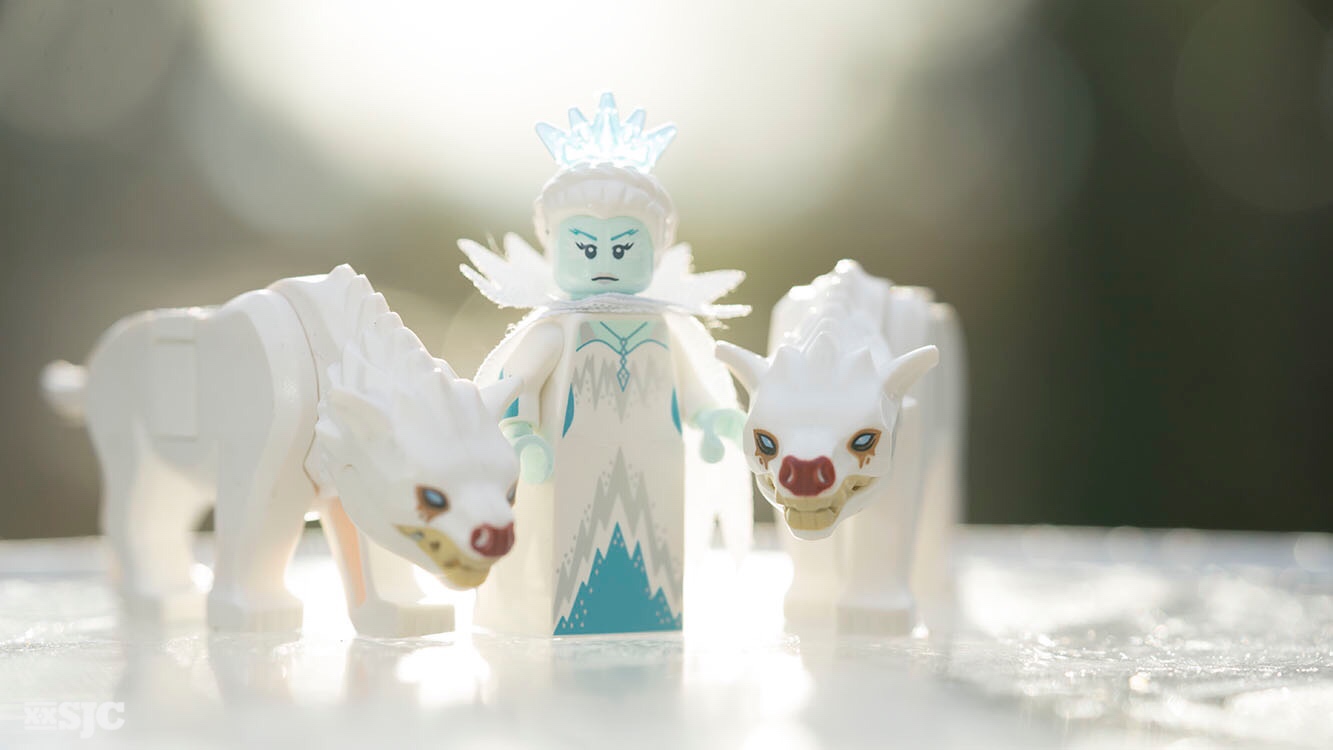
Conclusion
I don’t think it is the LEGO Groups responsibility to change the social injustices of the world. If LEGO is only hearing the complaints from the boys, then as a female and as a mom, I am officially registering my complaint that there are too many male oriented figures in the collectible minifigure series. I demand to see a better representation of female characters intros series. And I don’t mean simply offering up a female scientist, female snowboarder, female policeman. I’m pretty sure that this mini figure designers are more clever than that.
I don’t think it is too much to ask The LEGO Group to live up to the standards they set for themselves: dee beds er ikke for godt. This roughly means “only the best is the best” or more literally “the best is never too good”. Would it be too much to ask to create toys for both girls and boys equally? Is it really asking too much to treat boys and girls the same? They can begin making amends by increasing the number of female oriented mini figures in the collectable minifigure series and to start taking the complaints from their consumers with a little more skepticism.
Shelly
What female mini figures would you like to see represented in the popular collectible minifigure series?
Feel free to leave your own thoughts below on gender equality.
And don’t forget to subscribe to the blog to get notified when we have a new post ready for you.



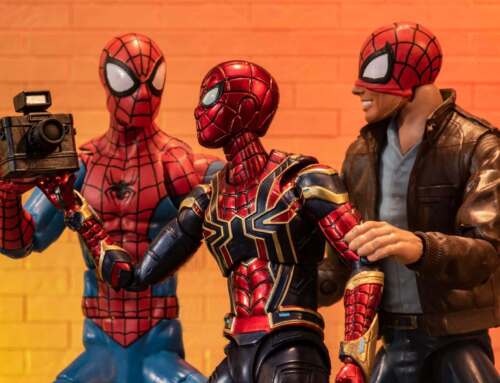
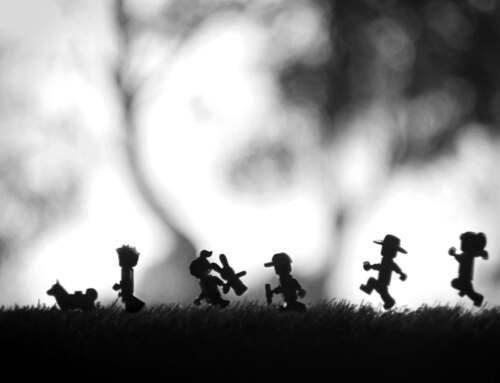
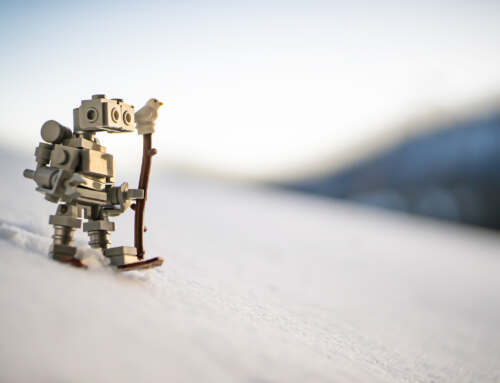
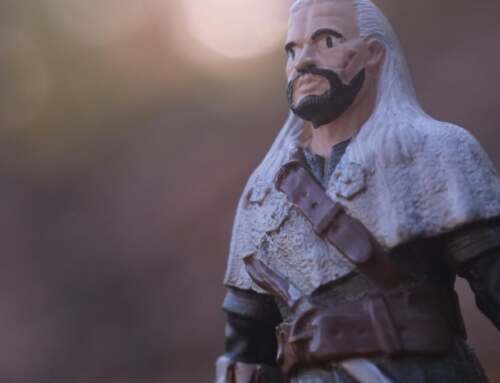
“Really? The reason why there are so many male figures is that girls are happy with any minifigure that looks good and boys complain when it isn’t a boy?”
I would venture to say this is the perceived reason, but the problem goes deeper. Girls may not be happy about the lack of representation of minifigures, but when a girl complains she is often told to get over it and effectively silenced. If you doubt this, just look at when Hillary Clinton published her book detailing one of the most important historical runs for President of the United States. She was told to “go away already” and to “get over it.” When Bernie Sanders published his memoir of the campaign trail, he did not receive similar remarks or articles. Men are allowed and encouraged to complain and speak their minds; women had best shut up.
It’s no breakthrough illumination that boys complain more and thereby toy companies hear their voices more than girls. It’s a societal problem that is aching to be dealt with, except no one wants to talk about it, because, oh the girls are complaining and they should just be happy with those 3 female minifigures in a series of 16. It’s circular and never-ending, unless we stand up and do something about it, as a society. We need to encourage girls to speak their mind and in turn not disparage them when they do so.
This is a big reason there is a gender inequality pay gap, this is a big reason women get overlooked for job promotions; this is systematic! But it would be nice if a company whose ideals are built around making toys “for girls, for boys” would put them into practice and make a difference.
Julie you know i agree with you 100%. You have stated the problem so eloquently, I have nothing to add. Thank you so much for taking the time to post your thoughts here in the comments.
Now if only LEGO would follow their own guidelines. In the mean time we ‘girls’ can learn to grumble a little louder. 🙂
Excellent post Shelly! I fear that LEGO has become so concerned with pleasing their “target market” (young boys) that they don’t care if they offend the girls. Like Julie said, women are expected not to complain and to just accept what we get, even if it’s not what we want.
But even when we do complain, does the company listen to us? I have been quite frustrated recently in the lack of original trilogy Leia’s in the Star Wars sets. I have always suspected that this is because LEGO is concerned that boys won’t buy sets if there’s a girl in it (I think your post just helped confirm this theory). I have no proof but I can’t think of any other reason why she’s left out of the smaller (more affordable) sets, like the Carbon Freeze Chamber and the 40th Anniversary set (!!!) at San Diego Comic Con. I’ve voiced my concern to LEGO a few times but if anything, the problem is only getting worse. Original Trilogy Leia is now only available in a $500 set and an $800 set. What about all the young female Star Wars fans who want a Leia minifigure? They probably have to settle for a keychain of Leia while their brother is able to chose from many sets with Han Solo minifigs. Talk about enforcing the stereotype that Star Wars is only for boys.
I hope this post will help LEGO realize that they have many passionate female fans who would like to have more choice of female minifigures.
Lynn
Lynn, I love your comment here and totally agree with the lack of Leia presence. She’s such a critical figure (wink, wink). Thanks for posting.
Thank you very much for your reply Doug! I was actually just about to reply to your comment too! I was going to say that your comment about your son made me very happy. I’m glad to hear that there are boys who don’t mind female minifigures 🙂
Lynn
Hi Lynn. My son plays LEGO with lots of boys and girls. He loves Minecraft and Star Wars best, perhaps, but is game for Friends and Ninjago and many others, too. Many of the boys enjoy both genders when it comes to LEGO, so I’m delighted to be a bit baffled by the issue. Sexism is so rampant. I’m all in to add LEGO as another tool for the revolution.
Thanks Lynn for your comment and support. I couldn’t agree with your comments more. Remember when they didnt release the Rey minifigure in the first wave of SW sets. The excuse was that it would be a ‘spoiler”. Im not sure I buy that, not after this comment. You might find this interesting: https://ramblingbrick.com/2016/09/29/living-with-divercity-changing-depictions-of-gender-roles-with-lego-minifigures-in-the-post-friends-era/
According to Richard the ratio of girls to boys in LEGO sets overall is getting better. And that the reason that Marvel and SW sets have so few female characters is the source material. Again, I think this is a cop out. Ninjago could have a lot more female characters and thats LEGOs only property. Just because Leia is the only main female character doesn’t mean there should be fewer of her, but more. If nothing else it would stop us all from having to pay scalpers prices to get our hands on them. Seriously… obviously the market place wants more Leia’s not less. LEGO needs to satisfy all their fans. I would be happy if we could get to 35% ratio of female to make figures, and not in the 25-30% range we are currently in. Seriously…
…so frustrating. 🙁
Thanks for the link to that interesting article Shelly! I have noticed the increase in female minifigs in LEGO City and I’ve been quite happy with it. I always like to purchase the sets that include female scientists and other strong female characters and it’s great that we’re finally seeing some progress in that area.
About Rey, I think the incident you’re remembering happened when Hasbro released their Star Wars Monopoly game and conveniently forgot include Rey. LEGO actually included Rey in an affordable ($20) set during the first wave in September 2015. I remember because I was so happy that I bought two of them on release day. What’s ironic is that Hasbro has done a much better job of representing Leia this year than LEGO and as a result, I spent more money on Hasbro Star Wars figures (40th Anniversary and Forces of Destiny) and I bought very few LEGO Star Wars sets. That’s money that I had planned to spend on LEGO but spent elsewhere because I didn’t care for the selection of minifigures in the Star Wars sets. Hopefully this will change in the future!
Lynn
Yes, yes, yes! I’ve often been perplexed by this odd and poor choice on LEGO’s part for many reasons, including the message it sends to girls and boys alike. Happily, my 8 year old is very observant and often talks about wanting “the girl figs because they are so rare” and the like. He has equal love for figs across genders, so no complaints for this boy (if that’s even a true phenomenon). I love the list you all came up with, too. I’m already taking pics with many of them in my mind. Thanks for this piece Shelly!
Doug thank you so much for your comment. You are such a great parent! I think this issue is as much a parenting issue as it is a LEGO issue. Boys will be happy with girl figures if parents set a positive example. Obviously its not LEGO’s job to teach people how to parent, but they can certainly treat those complaints with a little skepticism.
Since I came out of my dark ages, I’ve been disappointed with how much LEGO has shifted away from being one of the least gender stereotypical toy manufacturers. While I admit there’s been some significant progress (back in the 90s when LEGO started to make faces with enough details so they could be associated with a man or a woman, a female looking minifigure was much rarer than nowadays), there’s also been some steps back. I don’t think it’s a problem limited to the CMF series, or even to LEGO. LEGO “just” do what other toy manufacturers have always done. (Still, I don’t think it’s an excuse.) There may be more than a single cause to gender inequalities and sexism, but the influence of toys marketing is in my opinion, not the least important.
As someone who played as a kid as much with toys being stereotyped/marketed “for boys” and “for girls”, I can only agree with the lack of female minifigs, and with all that has been said in the comments. Unfortunately, I’m not optimistic and don’t expect to see a real change happening soon. Sadly, I doubt AFOLs complaining will have any impact. I think the problem is that false idea that “boys need to play with male characters”. If I’ve been a boy playing with female characters (and “girls’ toys”), it’s because of how I’ve been raised. With parents who didn’t encourage me playing with both “boys’ toys” and “girls’ toys”, maybe I would have been too a boy complaining about female minifigures because of the general social pressure (which I can say is strong!). I genuinely think that as long as so many children grow surrounded by the idea that it’s the normal to have strongly gender-stereotyped toys, gender inequalities will persist, both in the real and minifig world.
I think you hit the nail on the head, Reiterlied. There’s a crisis of masculinity in this culture. Societal pressures based on traditional gender norms need to go away in order for true change.
Maelick, I certainly don’t think this post will change anything. Far from it. The problem as you say runs much deeper. This is a societal issue where children are taught from a very young age who and what has value. It is up to us parents to set a better example (like your parents did) for our kids. The change has to come from us. I wrote this post to answer the continuing question that comes up with each new CMF series: why so few females. Now we know we can expect five in every set of 16. No more and hopefully no less.
Well women and girls don’t have to have full lips, long hair, and curvy waists, so it’s also plausible that kids are capable of imagining the toys without an obvious gender are girls. That would have been a better explanation. The original Lego Ideas scientist set, as posted on the ideas site, didn’t all have the lips or curves, but the finished product was definitely feminine.
My daughter, years ago, had no problem sticking her face in a cutout train engineer, with no hair, and exclaiming, I’m an engineer! Her cousin, on the other hand attempted to correct her and explain the cutout was a boy.
On the other hand, my daughter also likes to use very feminine skins in Minecraft, so she does enjoy having stereotypically girly options.
Thank you for your comment and joining the conversation. If you asked me about this issue when the LEGO Ideas Scientist set came out, I would have given the same answer: I have no problem creating a female xx out of any of the LEGO Characters simply by exchanging a few heads and maybe grabbing new hair. I fully believe that their are (nearly) enough options in the LEGO universe to create just about any male / female combination you can desire. My disappointment comes from the response: Boys complain. I think that is a cop out and one that the founders of LEGO probably wouldn’t agree with. Girls have been playing with LEGO as long as boys and we will continue to find a way to enjoy it with or without the companies support.
Im glad your daughter finds ways to express herself in the games she plays, be it Minecraft or LEGO. 🙂
Thank you for this post, Shelly! I’m sure it wasn’t easy to write, but it’s an incredibly important issue to address and you did so eloquently. My wife and I are always disappointed by the male/female ratio of the collectible minifigures.
I think you’re absolutely right that the founders of LEGO would disagree with the reasoning here that boys complain, so that’s why we have more male figures. I LOVE that you asked how LEGO is getting that data… It feels like a bit of a cop-out to me. Which further proves how important it is that you bring this up.
Social reasoning aside, as a photographer, it’s especially frustrating that there aren’t more female figures because it limits the range of photos I’m able to take. There simply aren’t many female faces out there, and those we do have have pretty limited expressions. They’re either smiling, or angry. I’d love to see more variety. Why aren’t there female faces that are sleepy, panicked, holding their breath, etc.? I know that I can sometimes just put some hair on a male face, but sometimes that simply doesn’t work.
LEGO for girls, for boys, listed at number 2 should be the catalyst for equality in representation! The reasoning that complaints dictate the outcomes is terribly disappointing. It’s a case of the squeaky wheel getting the oil.
I wonder how many other characteristics would be overlooked if complaints around them started rolling in? Would safety and quality be rejected if protests about LEGO being too safe and the quality being too high flooded their offices?
We’ve been down this road before, debating and discussing the gender gap, but to hear this possible reason for it existing, and continuing, is awfully upsetting.
I had a massive rant written, about how Lego made this problem for themselves by turning Legoland into a Police State where the mix-gender house sets went away and the male-populated police, fire, and ambulance sets came to be… pushing girls away from Lego. But then I scrapped it all because there is such a simple solution to the problem…
All Lego has to do, have another pack that is an accessory pack for each collectible set and it comes with a couple of spare heads and hair pieces and a skirt or such to make it easier to transform your minifigs from one gender to another. They can do the same with the other boxed sets. Bonus for us is we get extra heads, expressions and accessories to play with.
Really though, I was saddened by the release of the Friends line, it was Lego drawing a line in the sand and saying “that set’s for girls, and that set’s for boys”.
Young boys don’t complain about having girl characters, I know because I used to be one, a young boy that is. I loved having the female characters to play with.
The only issue I take with the list shown above is the reliance on actual historical figures, turning Lego minifigs into named people removes a level of play… as someone who makes up stories with their figs (and always has) I tend to stay away from characters with established storylines.
Lego has tried, over the sets to balance out some of the male characters in the collectable sets.
Series 1’s caveman found a cavewoman in series 5
Series 1’s Zombie matched by a Zombie Cheerleader in Series 14
We’ve also seen boxers, lifeguards, surfers, skaters, robots, Native Americans, Aliens, Merpeople, galactic warriors, scientists, pretzel people, warriors, older people, and monarchy, all represented in both genders.
But yes, there is absolutely no reason why there can’t be parity in the minifig sets. 8:8 male and female.
The highest ratio is likely Ninjago which has 18 distinct characters (if you don’t count L-Loyd, as Garramond would say, and green ninja) with 6 of them being female oriented.
On Princess Leia not being in any low-price sets, I reckon that has a lot more to do with shifting the higher-priced sets than limiting Leia’s inclusion. She’s a highly sought after character and those who want her will pay to have her. She’s more desirable, not less. How else are they going to shift an $800 Millennium Falcon for the fifth time!
So in short, after that rant that is completely different from the rant I deleted: Yes to more female forms. No, I don’t buy that it’s little boys that are complaining about having too many female characters. Yes, I do believe there needs to be a mindset shift within Lego and their marketing company to bring the girls back to the fold now there IS more inclusion in the City sets.
I mean seriously, look at the AFOL community, the females are very well represented, which would imply it is a generational shift away and likely due to Lego moving more towards making it a “toy for boys”.
I really enjoyed your comment! I think it’s a great idea for LEGO to include alternate faces, hair pieces etc so that kids (and AFOLS) have the option to chose which minifig they build. I seem to remember that they did that with one of the free polybags. It was a fountain with a statue and they included different hairpieces so the statue could be either female or male.
About the Leia minifigs though…. You said that those who want her will pay to have her. I think that’s true to an extent. I bought a $100 set for the Leia minifig (75094, Tydirium) but I refuse to buy a $500 set or a $800 set just for the Leia minifig. I know that some other female Star Wars fans feel the same way because I’ve talked to them about it. So if we want an Original Trilogy Leia minifig, we will buy her on Ebay or Bricklink instead. In this case, all LEGO is doing is sending business to the after market scalpers and, at the same time, annoying their female Star Wars fans by not including Leia in a reasonably priced set. Can you imagine if Han Solo was only included in a $500 and an $800 set? That would cause a massive uproar of angry fans! But the fans of Leia are just supposed to accept it and buy the minifig from Bricklink at aftermarket prices? It doesn’t seem right…. everyone (boys and girls) should have an opportunity to get a Leia minifig in a moderately priced set.
What I think would be the most awesome is a 40th Anniversary set (for less than $200) that recreated a scene from A New Hope and included all the major characters 🙂
Lynn
To be honest I’ve only ever bought one Star Wars set in my life. It was a troop carrier set costing about $20 Australian dollars. I avoid most of the licensed stuff because of the crazy mark up on the sets.
I also tend to avoid sets where the figures aren’t the traditional Lego yellow. I LOVE that minifigs by nature are largely non-ethnic specific.
I have bought the odd Star Wars figure from Brinklink though.
And on including major characters in only the expensive sets… non-ghost Vitruvius was, if I remember correctly, only available in Lord Business’ Evil Lair, which in Australia was over $100 or in the Sea Cow set which was about $450 here. I still don’t have one of him even though he was my favourite character in the movie.
You’re right about the poly bag, I have the female version of the statue sitting on one of my many Lego shelves.
I would like to thank Shelly for bringing up this contentious and emotional topic. The more we discuss issues like this at all levels, including the choice of toys, the more likely equality will become commonplace in the future.
I’m coming in late to this conversation and a lot of what I have to say has already been said (Leia; curvy torsos; exchangeable heads/hair). However, there are a few things I’d like to add:
1) depending on the culture, many roles are now considered unisex and Lego could further expand on the types of minifigures such as the surgeon, paleontologist, and scientist. Politics, teaching, nursing, law, business, and engineering have had both females and males practicing for many years now, and even though there may be disparity in numbers I think, many countries would not consider males, or females, out of place in these roles;
2) for minifigures that do not have gender specific hair, or short hats/helmets, why not double print the head pieces? One side with a male face, one with a female. Series 17 alone could add four more female characters with a simple bit of printing. I would even argue that Rocket Boy could become Rocket Kid/Child with a simple name change. Let the owner decide whether the character is male or female;
3) Lego has the opportunity to make many series/sets appealing to all children. Friends and Elves don’t have to just appeal to girls, just as Lego City could easily include a hospital, veterinary clinic, and school, with both female and male characters;
4) and lastly, my fellow males need to join our female counterparts (both adult and child) and stand up against this disparity. People, in general, should no longer tolerate gender or any other sort of inequality. I would love my grandkids (yes, I think it will take at least that long) to see a world where we all consider each other equals, no matter the gender or race. I doubt it’s going to happen in my lifetime, but we can aspire to it.
I will personally be sending similarly worded correspondence to Lego. I encourage all toyphotographers.com to do the same.
Shelly, you already know I complain loudly about gender inequality directly to LEGO’s sales team. I wonder if I were a consumer instead of a reseller, if they would take my feedback more seriously…
Another systemic issue for character-based figs is that there are fewer female characters written/cast/directed — whose stories are not told because of patriarchy — or that they are all to frequently a sidekick or supporting character rather than the protagonist. If there are fewer female characters, there are necessarily fewer female options to create figs from.
An interesting anecdote: a male friend of mine was reading some YA fiction in which the whole series had a female protagonist. He liked the books but after reading the series expressed some disappointment that he wasn’t able to identify with the main character as much because she was a girl. He looked at his female partner and at me and my wife and said something like “oh, that’s what that feels like”, acknowledging that most girls see an over-representation of male characters with whom they may or may not identify, but until recently did they even have much of a choice about the gender of the protagonists in the books/tv/movies/media they consume. The devaluation of the female is in our history and our present, and without a strong and unwavering commitment anti-sexism/gender equality from both men and women, it will continue to be as pervasive in all aspects of our global culture, whether in a pay gap or in a toy. It’s all connected.
As for ideas:
Anne of Green Gables
Nancy Drew
Katniss Everdeen
Non mini doll versions of Disney females
Susan B Anthony
Harriet Tubman
Madam CJ Walker
Lumberjack
Mechanic
Etc.
And thanks to all of the other commenters for some brilliant and beautifully articulated insights. I fully agree with gender-neutral torsos and double printed heads that allow for more characters, more play, more representation, more equity, and more expression for all ages and genders of LEGO fans.
Being the father of a boy who has gotten a female minifig (from the Ninjago movie packs) I can attest that little boys are actively against getting minifigs.
I see it as a teachable moment for the boy, and not a reason to not have more female minifigs, but I know many people who would be actively upset about their kids being upset at getting the wrong gendered minifig.
Um… My comment was meant to be ‘against getting female minifigs’